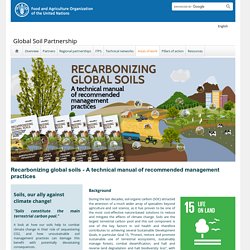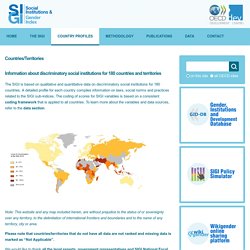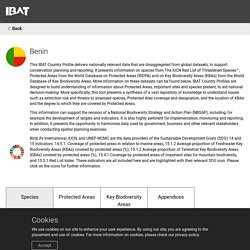

Brim one pager 12dec2017. NaturAfrica. Cb6606en. Food and Agriculture Organization of the United Nations. During the last decades, soil organic carbon (SOC) attracted the attention of a much wider array of specialists beyond agriculture and soil science, as it has proven to be one of the most cost-effective nature-based solutions to reduce and mitigate the effects of climate change.

Soils are the largest terrestrial carbon pool and this soil component is one of the key factors in soil health and therefore contributes to achieving several Sustainable Development Goals, in particular Goal 15, "Protect, restore and promote sustainable use of terrestrial ecosystems, sustainably manage forests, combat desertification, and halt and reverse land degradation and halt biodiversity loss", with SOC stocks explicitly cited in Indicator 15.3.1. Technical Manual. EIEYoko. Gouvernance Régionale des Aires Protégées en Afrique de l’Ouest. Gestion durable de la Biodiversité et des aires protégées en Afrique de l’Ouest : les Ministres en charge de l’Environnement de 16 pays de la Région Afrique de l’Ouest lancent deux grands programmes à Ouagadougou. Profil relatif à la Biodiversité et la lutte contre la criminalité liée aux espèces sauvages : Liberia – West Africa Biodiversity and Climate Change (WA BiCC)
InforMEA. Nations For Indigenous Peoples. West Africa. 3594eb 612674dab27c4909b4d6958354c0e813. West Africa. Explore the World's Protected Areas. Treaty bodies countries. Explore the World's Protected Areas. Gender, Institutions and Development Database 2014 (GID-DB) BJ. BJ. Countries/Territories. The SIGI is based on qualitative and quantitative data on discriminatory social institutions for 180 countries.

A detailed profile for each country compiles information on laws, social norms and practices related to the SIGI sub-indices. The coding of scores for SIGI variables is based on a consistent coding framework that is applied to all countries. To learn more about the variables and data sources, refer to the data section. KeyBiodiversityAreas.org. Integrated Biodiversity Assessment Tool (IBAT) 1.1 Overview This section provides country specific information about species with respect to their risk of becoming extinct, according to The IUCN Red List of Threatened Species™ (hereinafter referred to as the “IUCN Red List”).

The IUCN Red List is widely recognized as the most comprehensive, objective global approach for evaluating the conservation status of plant and animal species. It provides taxonomic, conservation status and distribution information on plants, fungi and animals that have been globally evaluated using the IUCN Red List Categories and Criteria. It also provides information about species for which countries will have management responsibility (i.e. single country endemic species) and information about known threats to species.
This information can be used to prioritise species for conservation action by identifying the species that are most threatened with extinction. Employées, agriculture, femmes (% d’emploi des femmes) Integrated Biodiversity Assessment Tool (IBAT)